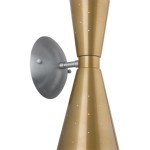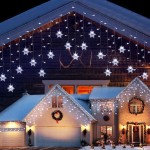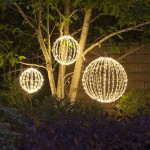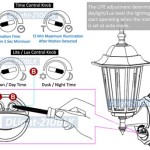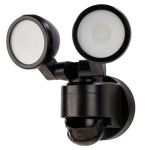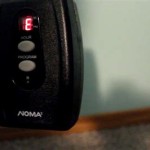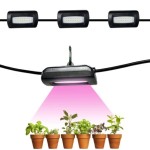Outdoor Lighting Reviews: Understanding Low Voltage Systems
Outdoor lighting not only enhances the aesthetic appeal of a property but also provides security and safety, making outdoor spaces more usable after dark. Among the various outdoor lighting options available, low voltage systems have gained significant popularity due to their ease of installation, safety features, and energy efficiency. This article will explore the intricacies of low voltage outdoor lighting systems, providing a comprehensive review of their components, benefits, installation considerations, and maintenance requirements.
Low voltage lighting systems operate at a reduced voltage, typically 12 volts, compared to standard household voltage of 120 volts. This lower voltage is achieved through the use of a transformer that steps down the voltage from the mains power supply. This fundamental difference contributes to several advantages that make low voltage systems a preferred choice for many homeowners and landscape professionals.
A typical low voltage outdoor lighting system consists of several key components: the transformer, low voltage wiring, light fixtures, and connectors. Each component plays a crucial role in ensuring the system operates effectively and safely. Understanding these components is essential for selecting the right equipment and ensuring proper installation and maintenance.
Essential Components of a Low Voltage System
The transformer is the heart of the low voltage system. Its primary function is to convert the standard 120-volt AC power from the electrical outlet to a safer, lower voltage, usually 12-volt AC. Transformers come in various sizes (wattage) to accommodate different lighting loads. Selecting the correct transformer size is crucial. It must be able to handle the total wattage of all the connected light fixtures, with some additional headroom for future expansion or adjustments. Considerations include the type of transformer (electronic or magnetic) and its location (indoor or outdoor rated).
Wiring is the lifeline of the low voltage system, carrying the power from the transformer to the individual light fixtures. Low voltage wiring is typically a heavier gauge than standard household wiring due to the lower voltage and higher current. The gauge of the wire should be selected based on the distance between the transformer and the furthest light fixture and the total wattage of the lights on that circuit. Undersized wiring can lead to voltage drop, resulting in dimmer lights and potentially overheating the wires. Direct burial cable is typically used for outdoor applications to protect the wires from moisture, soil chemicals, and physical damage.
Light fixtures are the visible elements of the system, providing illumination and defining the aesthetic style. Low voltage fixtures come in a wide range of styles, including spotlights, floodlights, path lights, deck lights, and underwater lights. The choice of fixtures should be based on the specific lighting needs and the overall design of the landscape. Materials used in the construction of the fixtures, such as brass, copper, or powder-coated aluminum, are important factors regarding durability and resistance to corrosion. LED bulbs are often preferred for low voltage fixtures due to their energy efficiency, long lifespan, and low heat output.
Connectors are used to join the wiring to the transformer and the light fixtures. Reliable connectors are essential for ensuring a secure and weatherproof connection. Common types of connectors include gel-filled wire connectors, crimp connectors, and screw-on connectors. Gel-filled connectors are often favored for their ability to seal out moisture and prevent corrosion. Proper connection techniques are crucial to prevent loose connections, which can cause flickering lights, system failure, or even electrical hazards.
Benefits of Low Voltage Outdoor Lighting
One of the primary advantages of low voltage systems is their enhanced safety. Operating at a reduced voltage significantly reduces the risk of electric shock compared to standard voltage systems. This makes them a particularly suitable choice for environments where children or pets may come into contact with the lighting fixtures or wiring. It also provides peace of mind during installation and maintenance, as the risk of serious electrical injury is minimized.
Low voltage lighting systems offer greater flexibility in terms of installation. The lower voltage allows for the use of thinner and more flexible wiring, making it easier to route the wiring around obstacles and through tight spaces. Additionally, low voltage systems typically do not require a licensed electrician for installation, making them a popular DIY project for homeowners. However, it is always recommended to consult with a qualified electrician if you are unsure about any aspect of the installation process.
Energy efficiency is another key benefit of low voltage lighting. When paired with LED bulbs, low voltage systems consume significantly less electricity than traditional incandescent or halogen lighting. LED bulbs are known for their long lifespan and low heat output, further reducing energy costs and maintenance requirements. Although transformers themselves consume a small amount of power continuously, the overall energy savings compared to higher voltage systems can be substantial over time.
Low voltage systems offer a wide range of design options, allowing homeowners to create custom lighting schemes that suit their specific needs and preferences. The availability of various fixture styles, light colors, and beam angles provides considerable flexibility in highlighting landscape features, illuminating pathways, and creating ambiance. The ability to easily add or relocate fixtures allows for adjustments to the lighting design as the landscape evolves.
Installation and Maintenance Considerations
Planning is crucial for a successful low voltage lighting installation. Before starting the installation, it is important to create a detailed plan that outlines the location of the transformer, the routing of the wiring, and the placement of the light fixtures. Consider the specific lighting needs of different areas of the landscape and choose fixtures that are appropriate for each location. Measure the distances between the transformer and the farthest fixtures to determine the appropriate wire gauge.
Proper wiring techniques are essential for ensuring a reliable and safe system. Always use direct burial cable for outdoor applications and ensure that all connections are secure and weatherproof. Avoid running wires across walkways or other areas where they could be damaged. Bury the wires at a sufficient depth to protect them from accidental damage during gardening or landscaping activities. Use appropriate connectors for joining the wires to the transformer and the fixtures, and ensure that the connections are tight and corrosion-resistant.
Transformer placement is an important consideration. The transformer should be located in a dry, well-ventilated area, protected from the elements. Outdoor-rated transformers can be mounted directly on the exterior of the house or other structure. Indoor transformers should be placed near an electrical outlet and away from flammable materials. Choose a location that is easily accessible for maintenance and adjustments. Avoid overloading the transformer by ensuring that the total wattage of the connected fixtures does not exceed the transformer's capacity.
Regular maintenance is necessary to ensure the continued performance and longevity of the low voltage lighting system. Periodically inspect the fixtures for damage or corrosion. Clean the lenses of the fixtures to remove dirt and debris that can reduce light output. Check the wiring and connections for any signs of damage or corrosion. Replace any damaged or corroded components as needed. Trim any vegetation that is obstructing the light fixtures. Monitor the performance of the lights and adjust the aiming angles as needed to maintain the desired lighting effect. It is also good practice to check the voltage at the furthest light fixture to ensure that there is no significant voltage drop.
When selecting low voltage outdoor lighting, consider the specific needs of the application. Path lighting requires fixtures that provide a wide, soft light to guide pedestrians safely along walkways. Spotlights and floodlights are ideal for accentuating architectural features or highlighting trees and shrubs. Deck lights can be used to create a warm and inviting ambiance on patios and decks. Underwater lights can add drama and beauty to ponds and water features. The color temperature of the light is another important consideration. Warmer light colors (2700K-3000K) create a cozy and inviting atmosphere, while cooler light colors (4000K-5000K) provide brighter and more modern look.
Local building codes and regulations may apply to low voltage outdoor lighting installations. Check with your local authorities to ensure that your installation complies with all applicable codes. Some municipalities may require permits for certain types of outdoor lighting installations. Additionally, be aware of any restrictions on light pollution or glare that may be in place. It is also important to consider the impact of the lighting on neighboring properties and avoid aiming lights directly into windows or creating excessive glare.
In conclusion, low voltage outdoor lighting systems offer a safe, energy-efficient, and versatile solution for illuminating outdoor spaces. By understanding the key components, benefits, installation considerations, and maintenance requirements of these systems, homeowners and landscape professionals can create beautiful and functional outdoor lighting designs that enhance the aesthetic appeal and safety of their properties.

The 3 Best Smart Outdoor Lights For Backyards Of 2024 Reviews By Wirecutter

Reviews For Hampton Bay Total Home Security Controller Low Voltage Landscape Lighting Systems Pg 1 The Depot

Reviews For Hampton Bay Elmore Low Voltage Black Integrated Led 3 Tier Metal Outdoor Landscape Path Light With Frosted Plastic Lens Pg 1 The Home Depot

Low Voltage Outdoor Lighting Novi Mi Michigan Automatic Sprinkler

Smart Landscape Lighting Kit 6 Path Lights Volt

Smart Landscape Lighting Kit 6 Path Lights Volt

Smart Landscape Lighting Kit 6 Path Lights Volt

Reviews For Hampton Bay Total Home Security Controller Low Voltage Landscape Lighting Systems Pg 1 The Depot

Reviews For Hampton Bay Low Voltage 50 Watt Black Outdoor Landscape Flood Light T3 Halogen Bulb Pg 1 The Home Depot

How To Fit Outdoor Lights Lighting Electrical Security B Q
Related Posts
